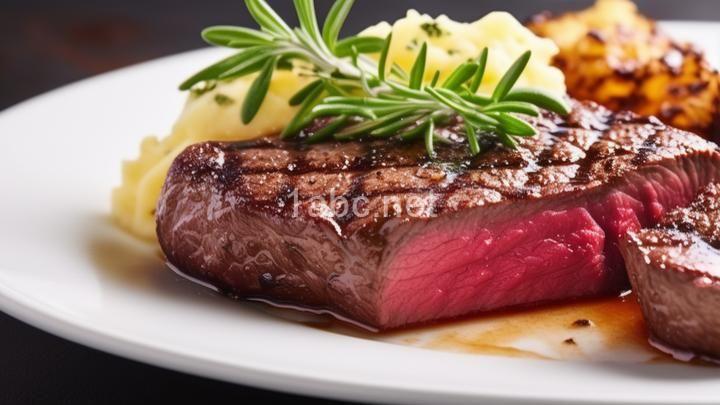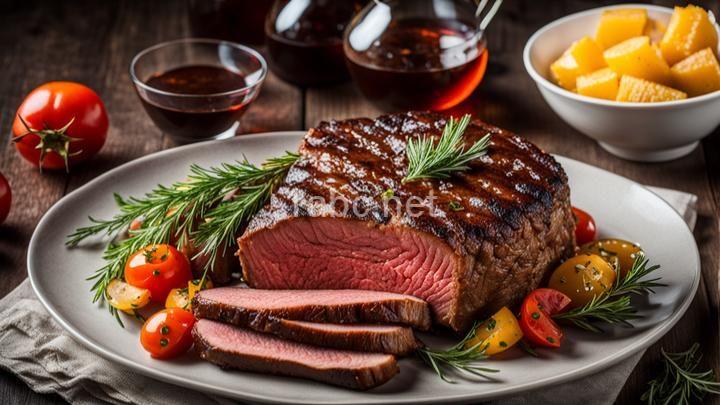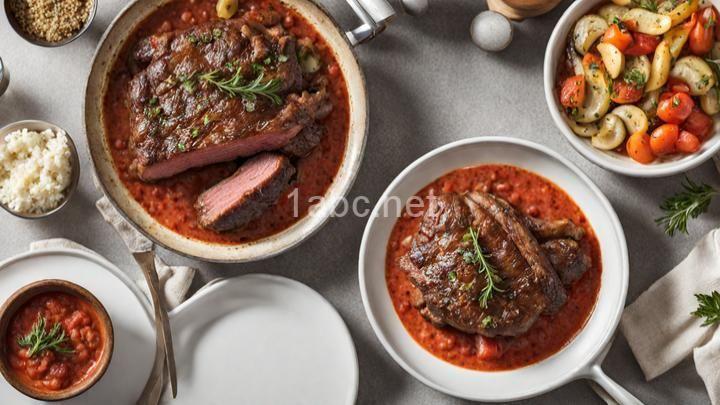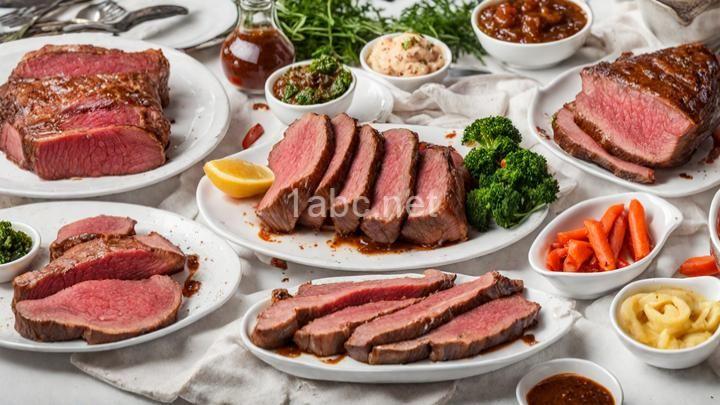Tenderizing Beef: Traditional vs. Modern Techniques
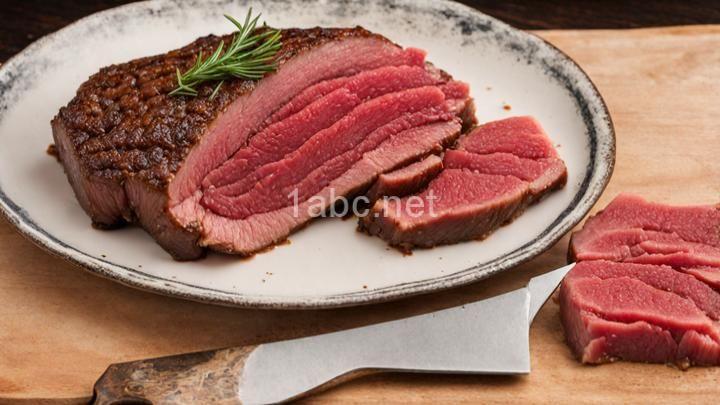
Introduction:
Hey there food enthusiasts! Are you ready to dive into the world of beef tenderization? In this blog post, we'll explore the traditional and modern techniques used to tenderize beef. We all know that tender meat is crucial for a delicious dining experience, so let's get started!
I. Traditional Techniques:
Traditional techniques have been passed down through generations, and they still play a significant role in tenderizing beef. These techniques involve time-tested methods that have been used for centuries. Here are two popular traditional techniques:
1. Marinating:
Marinating is a process where meat is soaked in a flavorful liquid to enhance its tenderness and infuse it with delicious flavors. The science behind marinating lies in the acidic components of the marinade, such as vinegar, citrus juices, or even dairy products. These acids break down tough muscle fibers, resulting in tender and juicy meat.
When marinating beef, it's important to consider the type and cut of meat, as well as the ingredients used in the marinade. Some popular marinade ingredients include soy sauce, Worcestershire sauce, garlic, and various herbs and spices. The marinade should be allowed to penetrate the meat for a specific amount of time to achieve the desired tenderness. For tougher cuts of beef, longer marinating times are recommended.
2. Mechanical Tenderization:
Mechanical tenderization involves physically breaking down the muscle tissues of the meat to make it more tender. This technique typically involves pounding the meat with a meat mallet or using other tools specifically designed for tenderizing.
The goal of mechanical tenderization is to break down the tough connective tissues and muscle fibers, resulting in a more tender texture. It's essential to use the right technique and tools to avoid damaging the meat. Tenderizing hammers, meat mallets, and even the back of a knife can be used to achieve the desired effect. However, caution must be taken not to over-tenderize the meat and turn it mushy.
II. Modern Techniques:
In recent years, modern techniques for tenderizing beef have gained popularity among culinary enthusiasts. These innovative methods have evolved to provide more precise and efficient ways of achieving tender meat. Here are two of the most notable modern techniques:
1. Enzyme-Based Tenderizers:
Enzyme-based tenderizers utilize natural enzymes, such as papain (from papaya) or bromelain (from pineapple), to break down proteins in the meat. These enzymes work on a molecular level, specifically targeting the tough muscle fibers and collagen.
Enzyme-based tenderizers are available commercially in the form of powders or liquid marinades. They are often used in conjunction with marinating to enhance the meat's tenderness. It's important to follow the usage guidelines provided with these products to avoid over-tenderizing the meat.
2. Sous Vide Cooking:
Sous vide cooking has gained immense popularity in recent years. It involves vacuum-sealing the meat and cooking it at a precise and consistent temperature in a water bath. This technique allows for gentle and slow cooking, resulting in incredibly tender meat.
Sous vide cooking provides precise control over the cooking temperature, ensuring that the meat is cooked evenly throughout. This method is particularly effective for tenderizing tougher cuts of beef, as the low and slow cooking process breaks down the collagen and connective tissues, resulting in tender and flavorful meat.
III. Comparing Traditional and Modern Techniques:
Now that we've explored both traditional and modern techniques for tenderizing beef, let's compare the advantages and disadvantages of each approach.
Traditional techniques, such as marinating and mechanical tenderization, require more time and effort. Marinating can take several hours or even overnight, while mechanical tenderization requires physical exertion. These techniques, however, provide the opportunity to infuse the meat with various flavors and can be done with readily available ingredients and tools.
On the other hand, modern techniques like enzyme-based tenderizers and sous vide cooking offer more convenience and precision. Enzyme-based tenderizers are easy to use and require minimal effort, while sous vide cooking allows for precise temperature control and consistent results. However, these techniques may require specialized equipment and ingredients that may not be readily available to everyone.
It's important to address common misconceptions about each technique. For example, marinating does not always guarantee more flavor; it depends on the ingredients used and the marinating time. Similarly, sous vide cooking may not be suitable for every cut of beef, and it's crucial to choose the right cuts for optimal results.
Conclusion:
In conclusion, tenderizing beef is an essential step in creating mouthwatering meals. Whether you prefer traditional techniques like marinating and mechanical tenderization or embrace modern methods like enzyme-based tenderizers and sous vide cooking, there are various ways to achieve tender meat.
Experimenting with different tenderizing techniques can expand your culinary skills and allow you to discover your preferred method. Regardless of the technique used, the ultimate goal is to create a well-prepared and flavorful beef dish that will leave you and your guests satisfied.
So, whether you're going old-school or embracing innovation, remember that tenderizing beef is all about enhancing your culinary skills and creating delicious meals that will impress everyone at the dining table.
FREQUENTLY ASKED QUESTIONS
What is the difference between traditional and modern beef tenderizing techniques?
Traditional and modern beef tenderizing techniques differ in terms of methods and tools used. In traditional beef tenderizing, the focus is on using natural methods to break down the tough fibers in the meat. One common technique is marinating the meat in acidic ingredients like vinegar or lemon juice. The acid helps to denature the proteins, making the meat more tender. Another traditional method is using a meat mallet to physically pound the meat, which helps to break down the connective tissues and soften the meat.
On the other hand, modern beef tenderizing techniques often involve the use of specialized tools and equipment. One popular method is using a meat tenderizer, which consists of a series of sharp blades or needles that pierce the meat. This helps to break down the tough fibers and create channels for marinades or seasonings to penetrate the meat more effectively. Another modern technique is using a meat tenderizing machine, which uses mechanical force to tenderize the meat.
While both traditional and modern techniques aim to make the meat more tender, modern techniques often offer more convenience and efficiency. The use of specialized tools and equipment can save time and effort in the tenderizing process. However, traditional methods may appeal to those who prefer a more natural and hands-on approach to tenderizing their meat.
Ultimately, the choice between traditional and modern beef tenderizing techniques depends on personal preference and the desired outcome. Whether you opt for the time-honored methods or the convenience of modern tools, the goal remains the same - to achieve tender and delicious beef.
Which technique is more effective in tenderizing beef?
When it comes to tenderizing beef, there are a few techniques that can be effective. One popular method is marinating the beef in an acidic liquid, such as vinegar or citrus juice. The acid helps break down the muscle fibers, resulting in a more tender texture. Another technique is using a meat mallet to tenderize the beef by physically pounding it, which helps to break up the tough fibers. Additionally, slow cooking methods, like braising or stewing, can also help to tenderize beef by cooking it for a longer period of time at a low temperature. Ultimately, the most effective technique may vary depending on the specific cut of beef and personal preferences. It's worth experimenting with different methods to find what works best for you.
How long does it take to tenderize beef using traditional methods?
Tenderizing beef using traditional methods can take anywhere from a few hours to several days, depending on the desired level of tenderness. The most common methods include marinating, pounding, and using a meat mallet.Marinating involves soaking the beef in a mixture of acidic ingredients, such as vinegar, lemon juice, or yogurt, which help break down the connective tissues and make the meat more tender. The marinating time can vary depending on the cut and thickness of the beef, but generally, a few hours to overnight is recommended.
Pounding the beef involves using a meat mallet or a tenderizing tool to physically break down the muscle fibers and soften the meat. This method is best suited for thinner cuts like steaks or cutlets. It usually takes just a few minutes of pounding on each side to achieve the desired tenderness.
For tougher cuts of beef, such as roasts or stew meat, a longer tenderizing process may be necessary. This involves using a combination of marinating and slow cooking methods, such as braising or simmering. These methods can take several hours or even overnight to achieve the desired level of tenderness.
Overall, the time it takes to tenderize beef using traditional methods can vary depending on the specific method used, the cut of beef, and the desired level of tenderness. It's important to experiment and adjust the cooking time to suit your preferences and the specific recipe you're following.
Are there any risks or disadvantages associated with traditional beef tenderizing techniques?
There are indeed some risks and disadvantages associated with traditional beef tenderizing techniques. One of the main concerns is the potential for bacterial contamination. When you tenderize beef using methods like pounding or needling, you are essentially breaking down the muscle fibers and creating small openings in the meat. This can allow bacteria, such as E. coli or Salmonella, to penetrate the surface and potentially cause foodborne illnesses if the meat is not cooked thoroughly.Another disadvantage is the loss of moisture. Tenderizing techniques like pounding or marinating can cause the meat to lose some of its natural juices, resulting in a drier final product. This can affect the overall taste and texture of the beef.
Additionally, traditional tenderizing methods can be time-consuming and labor-intensive. Pounding or needling the meat requires manual effort and can be quite time-consuming, especially if you are working with a large piece of meat.
Lastly, there is also the risk of over-tenderizing the beef. If you tenderize the meat for too long or use excessive force, you can end up with meat that is mushy and lacks texture.
To mitigate these risks and disadvantages, it's important to handle and cook tenderized beef properly. Make sure to follow food safety guidelines, such as cooking the meat to the appropriate internal temperature, to reduce the risk of bacterial contamination. Additionally, consider using alternative tenderizing methods, such as using natural meat tenderizers or opting for cuts of beef that are naturally tender, to avoid the drawbacks associated with traditional techniques.
